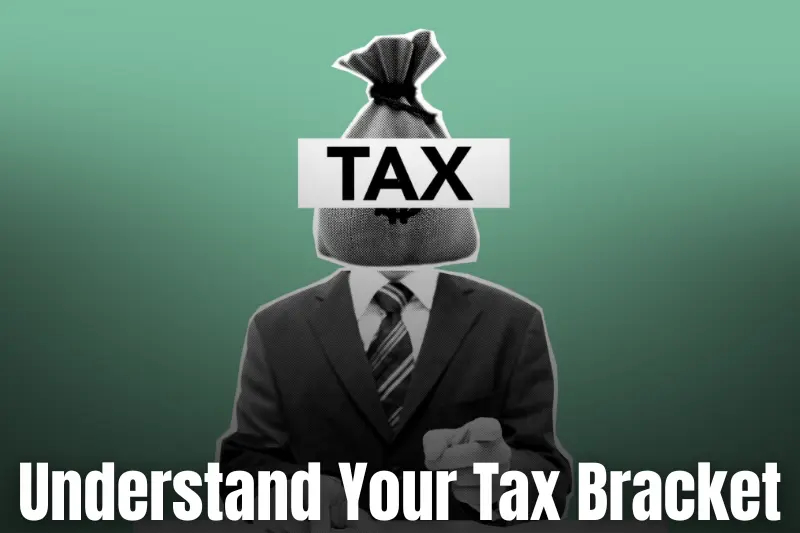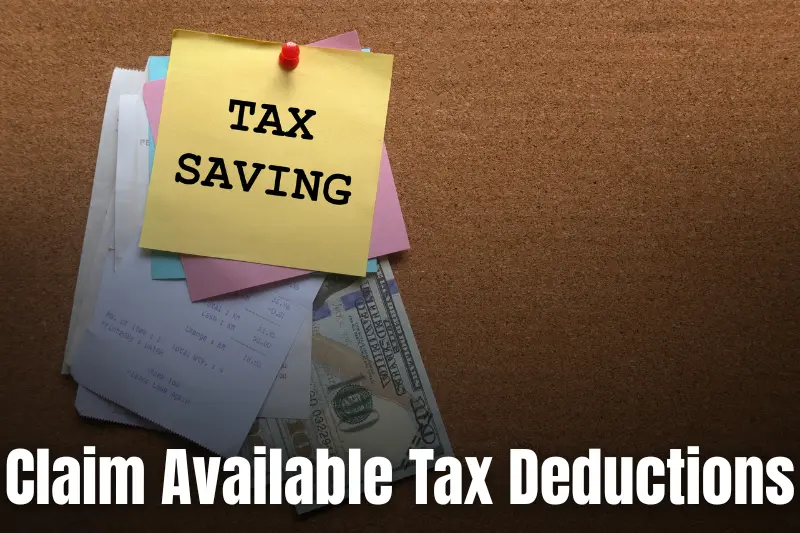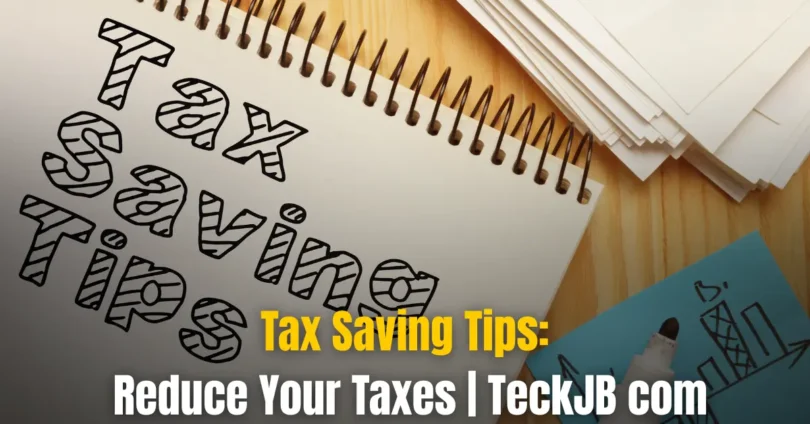Imagine paying less tax this year than last, and not because of luck—because you know the right tax-saving tips! Tax savings aren’t just for the wealthy; there are straightforward strategies available to everyone that can help reduce your taxable income. Ready to find out how you can make the most of your tax situation?
Tax saving refers to the strategies and methods individuals and businesses use to reduce their taxable income, ultimately lowering the amount of taxes they owe. These tax saving tips are not only legal but are encouraged by governments as a way to promote financial responsibility. By understanding and applying effective tax-saving strategies, you can keep more of your hard-earned money.
Imagine saving enough on taxes to use that extra money for something you enjoy, like a vacation or home improvements! Implementing tax saving tips can lead to significant financial benefits, helping you save for the future while enjoying more financial freedom today.
Understand Your Tax Bracket

What is a Tax Bracket?
A tax bracket is a range of income that is taxed at a specific rate. The more you earn, the higher your tax rate can be, but only the income within that range is taxed at that rate.
- Tax brackets are set by the government and are used to determine how much tax you owe.
- They vary based on your income level and filing status (single, married, etc.).
How Do Tax Brackets Affect the Amount of Tax You Pay?
The way tax brackets work is simple: as your income increases, you move into higher tax brackets, and the rate at which your income is taxed increases.
- For example, the first portion of your income may be taxed at a lower rate, and any income above a certain threshold may be taxed at a higher rate.
- You only pay the higher rate on the income that falls into the higher bracket, not on your entire income.
Why It Matters for Saving Taxes?
Knowing your tax bracket helps you understand how much you’ll be taxed and where you can make adjustments to save.
- Being aware of your tax bracket lets you plan for ways to lower your taxable income.
- You can use strategies like contributing to retirement plans or claiming deductions to reduce your taxable income and stay in a lower tax bracket.
How Knowing Your Tax Bracket Helps in Planning Tax-Saving Strategies
Once you know your tax bracket, you can take steps to reduce the amount of taxes you pay.
- Contributing to retirement accounts like a 401(k) or IRA can lower your taxable income, helping you stay in a lower tax bracket.
- Deductions and tax credits also become more effective when you understand where you fall in your tax bracket.
Tip:
- “Check your income tax bracket to figure out how much tax you’ll pay and explore ways to reduce it.”
You may also like it:
Personal Finance Guide: Tips for Financial Success
Smart Home Trends: Top Innovations for 2025
Easy Budgeting Tips: Manage Your Money Smartly
Maximize Retirement Contributions
Contribute to 401(k) or IRA
A 401(k) and an IRA are both retirement savings accounts that allow you to contribute money tax-free or tax-deferred, meaning you don’t pay taxes on that money until you withdraw it in retirement.
- 401(k): A retirement account offered by employers where you can contribute a portion of your salary.
- IRA (Individual Retirement Account): A personal retirement account where you can contribute money on your own, outside of your workplace.
Benefits for Tax Savings:
- Contributions to both a 401(k) and a traditional IRA are tax-deductible, meaning they lower your taxable income for the year you contribute.
- This helps reduce the amount of taxes you owe in the current year.
How to Contribute to a 401(k) or IRA
Contributing to these retirement accounts is easy and can be done with a few simple steps.
- For a 401(k): Your employer will typically allow you to have a percentage of your paycheck automatically deducted and sent to your 401(k) account. This is often set up when you first start a job.
- For an IRA: You can open an IRA with a bank or investment company. Contributions can be made directly to the account, and there are no automatic deductions like with a 401(k).
Example:
- “By contributing $5,000 to your 401(k), you may reduce your taxable income by that same amount.”
Additional Retirement Options
There are other retirement accounts you can use, depending on your situation.
- Roth IRA: Contributions to a Roth IRA are made with after-tax money, but withdrawals in retirement are tax-free. This is great if you expect to be in a higher tax bracket in the future.
- SEP IRA: A Simplified Employee Pension (SEP) IRA is typically used by self-employed individuals or small business owners. It allows larger contributions than a regular IRA and is also tax-deferred.
Tip:
- “Consider putting money into retirement accounts first—it’s like paying yourself and saving taxes at the same time!”
Use Tax-Advantaged Accounts
Health Savings Account (HSA)
An HSA is a tax-advantaged account designed to help you save for medical expenses. You can contribute pre-tax money to an HSA, which means you won’t pay taxes on the amount you deposit.
- Tax Benefits:
- Contributions to an HSA are tax-deductible, lowering your taxable income for the year.
- The money you withdraw for qualified medical expenses is also tax-free.
- The money in your HSA grows tax-free over time.
- How it Works:
- You can use the funds in an HSA to pay for eligible medical expenses like doctor visits, prescriptions, and even some over-the-counter medications.
- If you don’t use the funds in a given year, they roll over to the next year, and you can continue saving for future medical needs.
Flexible Spending Account (FSA)
An FSA is another type of tax-advantaged account, but it is typically offered by employers. It allows you to set aside pre-tax dollars to pay for qualified medical expenses, reducing your taxable income.
- Tax-Saving Benefits:
- Contributions to an FSA are made with pre-tax dollars, which lowers your taxable income.
- Withdrawals from the FSA for medical expenses are tax-free.
- Common eligible expenses include medical bills, prescription drugs, and even dependent care expenses.
- How it Works:
- You decide how much money to contribute to your FSA, usually at the start of the year. This amount is then deducted from your paycheck in small installments.
- However, FSAs are “use-it-or-lose-it,” meaning you must use the funds within the year or lose them.
Tip:
- “If you’re eligible, consider opening an HSA or FSA for healthcare expenses—it’s a smart way to save taxes while taking care of your health.”
Claim Available Tax Deductions

Standard Deduction vs. Itemized Deductions
The standard deduction and itemized deductions are two ways you can reduce your taxable income. Here’s how they differ:
- Standard Deduction:
- A fixed amount set by the IRS based on your filing status (single, married, etc.).
- It’s easy to claim and requires no additional paperwork or calculations.
- For most people, this is the simpler option and is beneficial if your deductions are not very high.
- Itemized Deductions:
- This involves listing all your deductible expenses, such as medical costs, mortgage interest, and charitable donations.
- You should consider itemizing if your total deductions exceed the standard deduction amount.
- This method requires more paperwork and careful tracking of your expenses, but it can lead to bigger savings if you have significant deductible expenses.
Common Deductions
Here are some common deductions you may be eligible to claim on your taxes:
- Mortgage Interest:
- You can deduct the interest paid on your mortgage, which can reduce the amount of taxable income you report.
- This is especially useful for homeowners with large mortgage payments.
- Student Loan Interest:
- If you’re paying off student loans, you can deduct the interest paid on those loans up to a certain amount.
- This helps lower your taxable income and reduce the amount you owe in taxes.
- Medical Expenses:
- You can deduct medical expenses that exceed a certain percentage of your income.
- Eligible expenses include doctor visits, prescriptions, and even some medical equipment.
Example:
- “You can deduct student loan interest if you’re paying off loans. That could mean paying fewer taxes!”
Take Advantage of Tax Credits
What is a Tax Credit?
A tax credit is a benefit that directly reduces the amount of tax you owe, dollar for dollar. It’s different from a tax deduction, which reduces your taxable income.
- How It Works:
- If you owe $1,000 in taxes and you qualify for a $500 tax credit, your tax bill will be reduced to $500.
- Tax credits are often more valuable than deductions because they directly reduce the amount of taxes you must pay.
- Types of Tax Credits:
- Some tax credits are refundable, meaning if the credit is greater than the tax you owe, you may receive the difference as a refund.
- Others are nonrefundable, meaning they can only reduce your tax liability to zero but not below it.
Common Tax Credits
Here are a few common tax credits that could lower your tax bill:
- Earned Income Tax Credit (EITC):
- This credit is for low to moderate-income workers and is designed to encourage and reward work.
- The amount of the credit depends on your income, filing status, and number of dependents.
- Child Tax Credit:
- This credit is available to parents or guardians with dependent children under a certain age.
- The credit amount can vary, but it’s a great way to reduce your tax bill if you have kids.
- Education Credits:
- The American Opportunity Tax Credit (AOTC) and the Lifetime Learning Credit (LLC) are designed to help with the costs of education.
- These credits can help reduce the costs of tuition, fees, and even some supplies for eligible students.
Example:
- “If you have children, you might qualify for a Child Tax Credit, which could lower your tax bill significantly.”
Invest in Tax-Efficient Funds
Tax-Efficient Investing
Tax-efficient investing means choosing investment options that minimize the amount of taxes you owe on the returns (or profits) your investments generate.
- Why It Matters:
- Investments like stocks, bonds, or mutual funds can generate taxable income through interest, dividends, or capital gains.
- Tax-efficient funds are designed to help you reduce the impact of taxes, meaning you keep more of your investment gains.
- How to Make Your Investments Tax-Efficient:
- Focus on investments that are less likely to trigger high taxes.
- Be strategic about where and how you invest based on your tax bracket and goals.
Options for Tax-Efficient Funds
Here are two common types of tax-efficient investments:
- Index Funds:
- Index funds track a market index (like the S&P 500) and usually generate fewer taxable events than actively managed funds.
- They typically have lower turnover rates, meaning fewer capital gains taxes on the profits from buying and selling assets.
- Tax-Free Municipal Bonds:
- These bonds are issued by local or state governments and their interest is often exempt from federal income tax.
- They are an excellent choice for those in higher tax brackets who want to generate tax-free income.
Tip:
- “Invest in tax-efficient funds to keep your investment gains from being taxed too heavily.”
Use Tax Loss Harvesting
What is Tax Loss Harvesting?
Tax loss harvesting is a strategy where you sell investments that have decreased in value to realize a loss. This loss can then be used to offset any gains you made from other investments.
- How It Works:
- When you sell an investment at a loss, the loss reduces your taxable income.
- You can use these losses to offset capital gains, which are the profits made from selling other investments.
- Why It’s Useful:
- It helps you reduce the amount of tax you owe on your investment gains.
- It’s especially helpful if you have a year where your investments performed poorly.
How Tax Loss Harvesting Helps Reduce Taxes
Selling investments at a loss can help lower your taxable income, and here’s how:
- Offsetting Capital Gains:
- If you’ve made profits from selling other investments (capital gains), you can use your losses to offset those gains.
- This means you’ll pay less tax on the profits because the losses reduce the amount of gains that are taxed.
- Reducing Taxable Income:
- If your losses exceed your gains, you can use up to $3,000 of those losses to reduce your other taxable income (like salary or wages).
- Any remaining losses can be carried forward to offset future gains in the following years.
Example:
- “If you sell some stocks at a loss, you can use those losses to offset gains in other areas—helping you pay less tax overall.”
Conclusion
So guys, in this article, we’ve covered tax saving tips in detail. I recommend that you take a closer look at these strategies and apply the ones that best suit your financial situation.
Whether it’s contributing to retirement accounts or making the most of tax credits, every little bit helps when it comes to reducing your tax bill. Start planning today and keep more of your hard-earned money. Take action now and see the difference it can make next tax season!
FAQs on Tax Saving Tips
What is the difference between tax deductions and tax credits?
Tax deductions lower your taxable income, which reduces the amount of taxes you owe. Tax credits, on the other hand, directly reduce the amount of tax you owe. Tax credits are often more valuable than deductions because they lower your tax bill dollar for dollar.
How can I find out which tax bracket I’m in?
You can find your tax bracket by checking the IRS tax tables or using an online tax calculator. Your tax bracket depends on your income level and filing status. Once you know your bracket, you can plan strategies to reduce your taxable income.
What is the standard deduction, and should I take it?
The standard deduction is a fixed amount you can deduct from your income based on your filing status. It’s usually the simplest option and works best if you don’t have many itemized deductions. If your deductions don’t exceed the standard deduction, it’s better to take the standard one.
Can I contribute to both a 401(k) and an IRA?
Yes, you can contribute to both a 401(k) and an IRA in the same year. However, each has contribution limits, and some rules apply, depending on your income. Doing so allows you to maximize your retirement savings while lowering your taxable income.
What is an HSA, and why is it beneficial?
A Health Savings Account (HSA) allows you to save pre-tax money for medical expenses. The money you contribute is tax-deductible, and withdrawals for qualified medical expenses are tax-free. It’s a great way to save on healthcare costs and reduce taxes at the same time.
How do tax-efficient funds work?
Tax-efficient funds are investments that generate minimal taxable income. Examples include index funds and tax-free municipal bonds, which are designed to reduce taxes on your returns. By investing in these funds, you can keep more of your earnings without facing high tax bills.
Can I deduct medical expenses on my taxes?
You can deduct medical expenses if they exceed a certain percentage of your income (usually 7.5% or 10%). This includes costs for doctor visits, prescription medications, and certain medical treatments. Keep track of all your medical expenses to take advantage of this deduction.
You may also like it:
Saving Money Tips for Students: Master Your Finances Now!
Startup Marketing Strategies: Boost Your Business Fast







